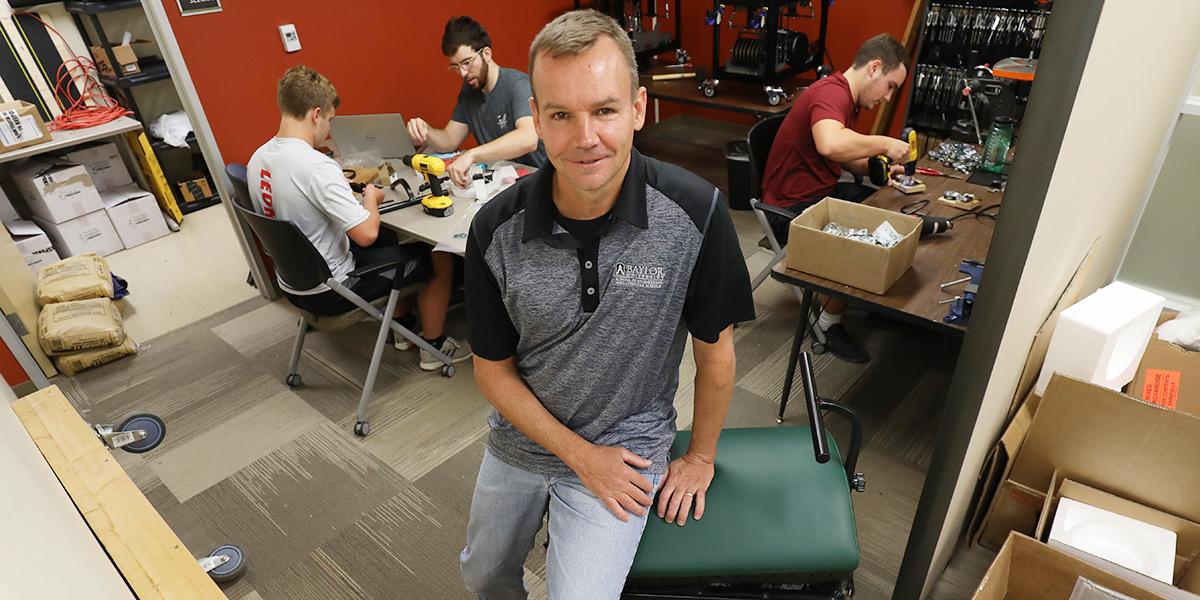Baylor prof’s device offers benefits of horse riding to kids with autism

For children with autism, therapeutic horse riding (hippotherapy) is known to be helpful. The evidence is anecdotal, but many children have shown improved motor and social skills (and less hyperactivity) after riding. For many families, however, there is a barrier to the benefits, as not every family can access or afford therapeutic horse riding.
A Baylor professor has come up with a novel approach to bridge that gap.
Dr. Brian Garner, an associate professor of mechanical engineering, has invented a mechanical device that simulates the motion of horseback riding, bringing the benefits of hippotherapy to places and people where it was previously unavailable. Called the MiraColt, it’s a cabinet-shaped device, sized for younger children, with a seat that serves as the saddle and inner-workings that mimic the many ways a horse can move.
In short, Garner explains, researchers believe a horse’s motion spurs the rider to physically adjust his/her own movement. These movements can stimulate muscles, senses and neurological connections that may be harder for children with autism to accomplish on their own. Garner used motion-capture technology and muscle stimulation sensors to capture the physical experience, then developed a single-motor system that can replicate that motion.
After patenting the device, he partnered with Baylor’s Lab to Market Collaborative to form Chariot Innovations, LLC, a company that develops and markets the product. Early reviews of the product have been good, and he recently received a grant to further study the device’s effectiveness for children with autism.
Amidst the excitement of the MiraColt’s recent momentum, Garner and his fellow researchers keep the children and families they serve at the heart of their research.
While testing a MiraColt prototype, Garner met a young child with severe physical impairments who was confined to a wheelchair. Something about the boy made Garner think of his own son. The child was inexpressive even as he was sat on the MiraColt. However, when the device began to move, the child suddenly smiled broadly at his mother.
“I’m reminded that we’re not just doing something in a lab,” Garner says. “The idea of touching somebody’s life and bringing them joy, peace and hope is truly what it’s all about.”
Sic ’em, Dr. Garner!

